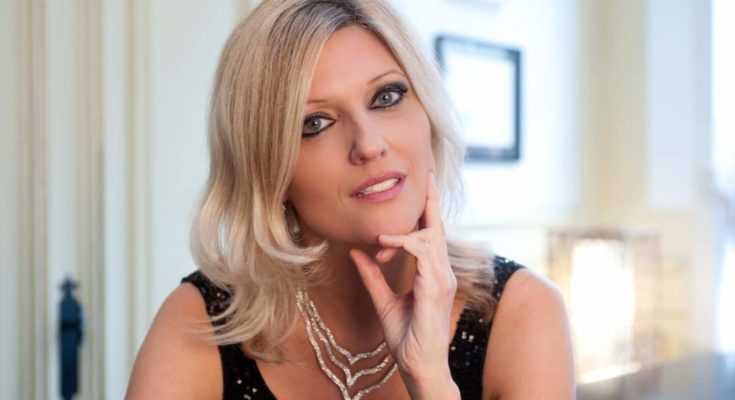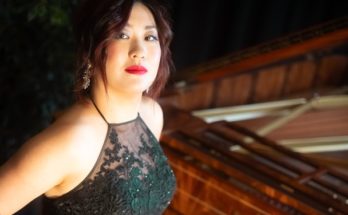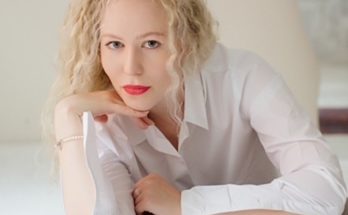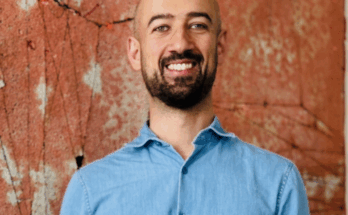PianoMe is used not only by locals, but also by international musicians. One of them is Veronique Vanhoucke. In an interview, Veronique told us about her current initiatives and why she likes PianoMe’s idea.
PianoMe (PM): Dear Veronique, thank you very much for your time! It is a great pleasure for us that you are ready for an interview with PianoMe!
Veronique Vanhoucke (VV): Thank you for having me! I’m delighted to be here and to share my passion for the piano and music with the PianoMe audience.
PM: That’s great, thank you! First of all, we would like to briefly introduce you to our readers, even though many of them probably already know who you are. Already at the age of 8 you were asked to accompany the choir of the Thonon Institute who gave concerts throughout Europe. Until 18 you were also one of the soloists of Tonada and Tonadissima. In 1996 you were admitted to the Royal Conservatory of Ghent. You have already given numerous concerts worldwide as a soloist, with ensembles and choirs. As I know, you are working on the transversality of the arts and use new technologies to find new possibilities of expression for the piano.
VV: Thank you for such a kind introduction! My journey with the piano has been a profound exploration of sound, creativity, and emotion. Indeed, I started young, and those early experiences with ensembles and choirs enriched my understanding of collaboration and musical dialogue.
While my years at the Royal Conservatory of Ghent helped me refine my technical skills and introduced me to new approaches, such as extended piano techniques and prepared piano, my fascination with exploring music beyond the classical repertoire began much earlier.
Today, my focus lies on creating a transversal dialogue between music, visual arts, and technology. I’m fascinated by how different art forms can merge to evoke new emotions and how technology can push the boundaries of the piano. For me, each performance is an invitation for audiences not only to listen but also to experience and connect with the music on a deeper level.
PM: That sounds great! Can you please tell us first how you got started playing the piano?
VV: I was only four years old when I first saw an orchestra perform, and I immediately told my parents, ‘I want to do this too!’ Initially I wanted to learn the violin. However, in Belgium, music school typically starts at age eight, so my parents found a private teacher for me instead. They came across Aimée Thonon, a pianist, and since she taught piano I started with that instrument instead. Afterwards, I also studied the violin, but piano became my main focus.
Through my contact with Aimée Thonon and her husband, Anto Diez, a cubist painter, I quickly recognized the link between visual art and modern music. This early insight was crucial; it shaped my understanding of how these forms influence and enrich each other. Aimée encouraged me to play contemporary Belgian composers from the age of five, which immersed me in the world of modern music. Growing up in an environment surrounded by contemporary art and music has been a defining element in my development as a musician and continues to inspire my work today.
PM: What kind of composers most influenced you and how much does their music still impact your activities today?
VV: The composers who have most influenced me are those who dared to challenge and expand the possibilities of music. Beethoven, with his profound passion and bold emotional range, has always been a source of inspiration, especially in how he revolutionized the expressive capacity of the piano. John Cage and George Crumb continue to impress me with their innovative ideas for the piano—Cage for his groundbreaking prepared piano techniques that pushed the instrument beyond traditional sounds, and Crumb for his ability to evoke vivid, otherworldly soundscapes that feel almost cinematic.
Debussy and Satie are also central to my artistic influences. Debussy’s use of color, atmosphere, and impressionistic textures brought new dimensions to piano music, encouraging me to view each piece as a painting in sound. Satie’s minimalism and gentle humor, on the other hand, remind me that simplicity can be profound and that music often speaks best through subtlety.
These composers have all shaped how I approach the piano and still resonate in my performances today. They remind me that music can be as vast and complex as the human experience itself, constantly evolving and inviting both the musician and the listener to explore new perspectives.
PM: You are an astonishingly gifted pianist with virtuosic technique and rhythmic grounding. I watched some of your videos, and one of the things that most impressed me about your playing is the charm that characterizes you and also your sexy look, which looks to be part of your performance. It seems to me that your performance is linked to your personality. Is my observation correct?
VV: I would say your observation is very much on point. For me, performance is a reflection of personality and artistic vision. I see myself as a ‘piano rebel’—I love challenging traditional norms, both in music and in my stage presence. My aim is to create a performance that invites the audience to engage on a deeper level, to question and feel, rather than passively observe.
Femininity is an essential part of who I am, and I view it as a dynamic force that can be both strong and graceful. My stage presence and look are an extension of this, and I see them as part of the same energy I bring to contemporary music. Just as modern music pushes boundaries and breaks away from tradition, my presence on stage aims to open up new perspectives, inviting the audience to see the piano in a fresh, unrestricted way. Art and music, for me, is also meant to challenge the listener or viewer, encouraging them to reflect on conventions and norms. In my performances, I hope to embody this principle, to break down conventional ideas of what a ‘piano performance’ should look like. By embracing all aspects of myself, I aim to inspire others to experience music as something unrestrained and multifaceted, where intensity and sensuality coexist. This connection between appearance and sound brings a new dimension to the stage, creating a space where music and performance come alive as one.
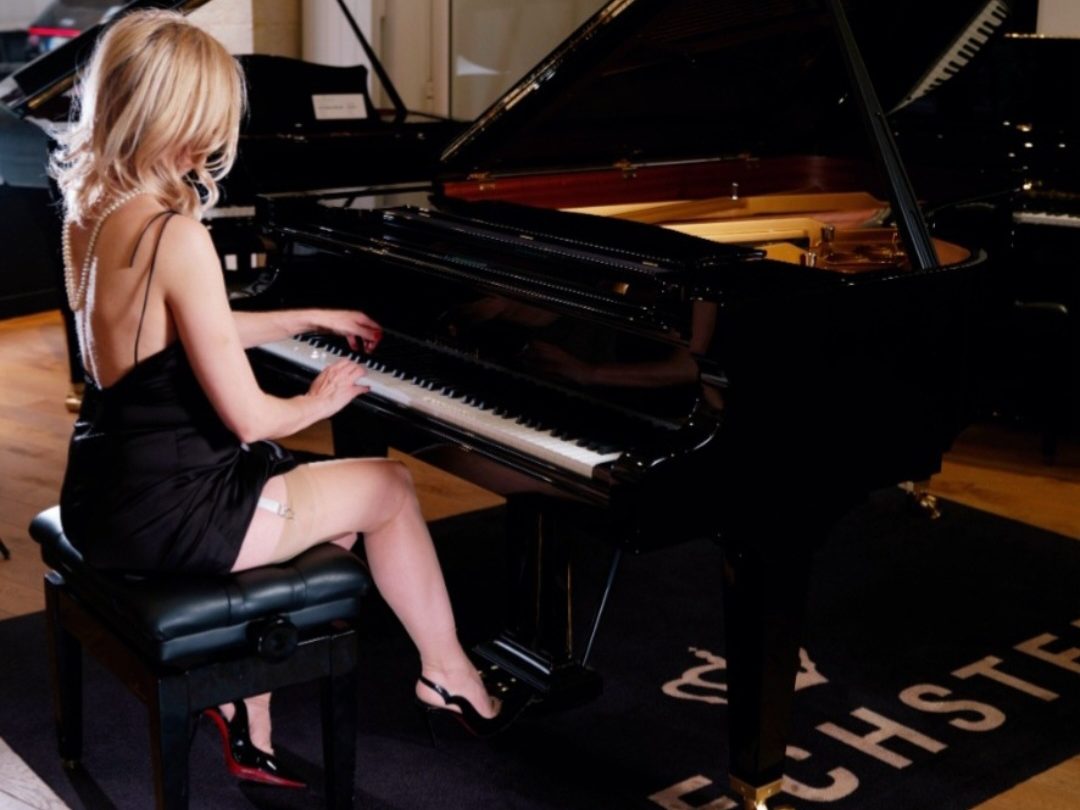
PM: Interesting! With your performances, you are making the art of piano performance highly interactive. How does the aspect of interactivity, in your opinion, affect the audience’s perception of music?
VV: Interactivity is essential to my performances because it transforms music from something static into a living, evolving experience. By engaging with the audience on multiple levels—through sound, visuals, and energy—I hope to break down the usual distance between performer and listener. I want the audience to feel that they’re part of the concert, not just watching it unfold.
When music is presented in an interactive way, it invites the audience to perceive it more personally. They’re not just hearing notes; they’re feeling the intensity, the contrasts, and even the unpredictability of each moment. This level of involvement allows them to connect with the music and reflect on it, perhaps in ways that challenge their usual ideas and emotional responses. Ultimately, I believe this interactive approach makes the music more memorable and meaningful, as it becomes something they’ve truly experienced rather than simply observed.
PM: You’ve shared quite a bit on your website about femininity and the artistic freedom that comes with it. Is it something that is completely subconscious or rather a sudden phenomenon?
VV: For me, femininity and artistic freedom are deeply intertwined, and while they’re natural parts of who I am, expressing them in my art is intentional. Femininity, as I experience it, is a force that’s liberating, dynamic, and multifaceted. It’s not confined to stereotypes but embraces strength, sensuality, and vulnerability—qualities that are essential to authentic expression.
On stage and online, I see my body as an instrument alongside my piano, which is an ally of my soul. Each note strengthens me, and together, we become whole. My photos on Instagram reflect this connection, often showing the piano as an extension of my body and mind. In this way, the piano is more than just an instrument; it’s a partner in expressing the full spectrum of my identity, allowing me to convey beauty, freedom, and sometimes even a quiet defiance.
In a world where femininity and serious music are sometimes seen as incompatible, I’m here to challenge that. Our bodies don’t detract from our artistry; they enhance it. By embracing both my femininity and musicality, I hope to inspire others to see that confidence in our bodies fuels confidence in our performances. Art, in all its forms, should challenge conventions and drive societal evolution. Through my work, I aim to embody and share that message of freedom, strength, and unity.
PM: And what do you do offstage that provides inspiration on stage?
VV: Offstage, I find inspiration in traveling and immersing myself in new cultures and perspectives. Meeting different people, experiencing unique ways of life, and exploring places that are unfamiliar—all of this broadens my worldview and influences how I interpret music on stage. I believe that each encounter adds depth to my art, offering fresh emotions and insights that I can bring into my performances.
I also practice Pilates regularly, which helps me stay grounded and connected to my body. It’s a time where I can focus inward, balancing both physical strength and mental clarity. Pilates keeps me centred, which translates into my performances, allowing me to express myself fully and with confidence. Together, these experiences enrich my artistic journey, giving me the energy and inspiration, I need when I step onto the stage.
PM: I know that you are just back from your trip to Asia. How do you see the level of interest in classical music in Thailand?
VV: Yes, I just returned from Bangkok, and it was a fascinating experience! I noticed that there’s a growing interest in classical music in Thailand, especially among younger audiences. They’re open to exploring not only traditional classical pieces but also more contemporary and experimental works, which is very encouraging. The classical music scene is still developing there, but there’s a genuine enthusiasm for live performances and international artists.
Asia has such a rich cultural heritage, and it was inspiring to see how audiences are embracing classical music as part of a broader artistic appreciation. I believe that with more exposure and support, the interest in classical music across Asia will continue to grow and thrive.
PM: By the way, how do you make your repertoire choices from season to season?
VV: A person is always evolving through new experiences, and everything I encounter naturally reflects in my repertoire choices. The pieces I’m drawn to today are entirely different from those I was drawn to when I first graduated. My repertoire evolves as I do—through collaborations, inspirations from books, art exhibitions, and, most importantly, through the ongoing journey of life.
Each new experience adds layers to my perspective, and I constantly seek pieces that resonate with this growth, enabling me to share it with my audience. Some of my programs arise from specific partnerships, such as my upcoming project in Italy, where I will perform George Crumb’s Metamorphoses in collaboration with director and musicologist Francesco Leprino. Leprino is renowned for his unique contributions to the musical world through films that place classical music at their core.
I also have the privilege of working with living composers who sometimes write pieces specifically for me. This is incredibly inspiring, as it allows me to be part of the creative process and interpret music that’s being composed in real time. These collaborations are invaluable; they give me unique insights into the composer’s vision and allow me to bring something entirely new to my audience.
PM: Do you have a preference in respect of playing solo or with ensembles and choirs?
VV: I truly enjoy the freedom and expression of solo performances, where I can fully immerse myself in the music and connect directly with the audience. There’s a certain intensity and vulnerability that comes with being alone on stage, which I find both challenging and rewarding.
That said, playing with an orchestra is also deeply fulfilling. The collaborative energy and the richness of sound created by so many instruments coming together is exhilarating. It’s a powerful experience to be part of such a large musical entity, where every musician contributes to something greater than the sum of its parts. While I appreciate ensemble work, my heart lies primarily in solo performances and playing with an orchestra.
PM: As a musician, what is your definition of success?
VV: As a musician, I see success not just in terms of achievements or recognition but in the ability to create meaningful connections with others through music. Success is when I can convey emotion and make an impact on the listener, moving them to feel or think differently.
It’s also important to me to introduce more people to contemporary music, encouraging them to go beyond the traditional aesthetic norms of classical music. There is so much beauty and depth in modern compositions, and I find success in helping audiences discover these fresh perspectives.
For me, success is also about continuous growth—challenging myself to evolve artistically and pushing beyond my comfort zone. Working with living composers, exploring new styles, and collaborating on creative projects are all ways I measure success because they keep my art dynamic and alive. Ultimately, if I can inspire others, bring new dimensions to the music I perform, and stay true to my artistic vision, then I feel I’ve succeeded.

PM: By the way, as a musician yourself, you know that the journey is never sweet and easy. What advice would you give to someone hoping to build a career as a musician?
VV: You’re absolutely right—the journey as a musician is rarely easy. It’s filled with challenges, but these are also what make the path so rewarding. My biggest piece of advice is to stay true to your artistic vision. It’s easy to get caught up in others’ expectations, but the most memorable musicians are those who remain authentic to themselves.
I’d also emphasize the importance of resilience and adaptability. The music world is highly competitive, and rejection or setbacks are common. Learn from every experience, especially the difficult ones, and stay open to new opportunities. Surround yourself with people who inspire and challenge you to grow—whether they’re mentors, collaborators, or even composers whose work pushes you out of your comfort zone.
Finally, keep your passion alive by always exploring. Don’t limit yourself to one style or genre—immerse yourself in all forms of art and music. This curiosity and openness will keep you engaged and help you bring fresh perspectives to your art. A career in music requires dedication and hard work, but if you hold onto your love for it, that will fuel you through even the toughest moments.
PM: Thank you! I’m really sorry, but I have to ask (laughing). What is your opinion on sharing rehearsal spaces by hosting a rehearsal space on an hourly basis?
VV: No problem! Sharing rehearsal spaces on an hourly basis can be a fantastic idea. As musicians, we’re always in need of good spaces to practice, and it’s not always easy to find the right environment with the right acoustics. Being able to rent a rehearsal space for just the time you need can be incredibly convenient and cost-effective, especially for those who may not have regular access to a dedicated space.
It’s especially helpful when you’re traveling and don’t have immediate access to an instrument. For many musicians who can’t afford to have a grand piano at home, this provides a great solution. In cities like Paris, some major piano brands even offer spaces where musicians can rent pianos by the hour, which is such a wonderful resource.
Plus, I think sharing spaces can lead to spontaneous connections and even collaboration between artists. There’s something inspiring about knowing other musicians are using the same space to create and rehearse. It can help build a sense of community among musicians who might otherwise never cross paths. So yes, I think it’s a practical and inspiring solution for many musicians!
PM: Finally, what are your aims for the future? Would you like to share any announcements with our readers?
VV: Looking ahead, I’m excited to continue exploring new ways to bring contemporary music to audiences and to break down traditional boundaries in classical music. I hope to inspire more people to experience the richness of modern compositions and to create performances that feel immersive and transformative.
As I mentioned, one of my major projects next year will be a collaboration in Italy with director Francesco Leprino, where we’ll present George Crumb’s Metamorphoses, blending music with visual storytelling.
I’m also composing music for two films, which offers an entirely different way to express myself musically. Additionally, an album of my own music, created in collaboration with Tolga Baklacıoğlu, will be released soon—a project very close to my heart. As one of the key figures in Turkish techno, Tolga is an artist who constantly pushes boundaries and evolves in his craft, both in the studio and on stage. It’s incredibly inspiring to work with someone whose art brings fresh energy and innovation.
I’m also continuing my concert series Seduced by Sound, where I perform solo piano concerts showcasing a variety of musical styles. This series allows me to explore different genres and bring something fresh to each performance. It’s also a visually engaging experience, as I incorporate visual elements that enhance the emotional impact of the music, making each concert a fully immersive journey for the audience.
Beyond music, I’m honored to serve as a muse for artists. Soon, a glass print of my legs and face will be created, and a painter will immortalize me on canvas. I also have several exciting photoshoots planned, along with an upcoming exhibition with Bupher Art that will feature my photos alongside a concert.
For those interested, I’d love for you to follow my journey on Instagram, Facebook, LinkedIn, and my website, where I’ll be sharing updates on all these projects. Thank you for the opportunity to share this with you, and I hope to see you at a performance soon!
PM: Dear Veronique, we thank you for the interview and wish you all the best!
VV: Thank you so much for having me! It’s been a pleasure sharing my journey and upcoming projects with you. Wishing you all the best as well, and I look forward to staying connected. Until next time!
Copyright:
-Photo 1 : © Christian Decloedt
-Photo 2: © Bupher Art
-Photo 3: © Christian Decloedt

